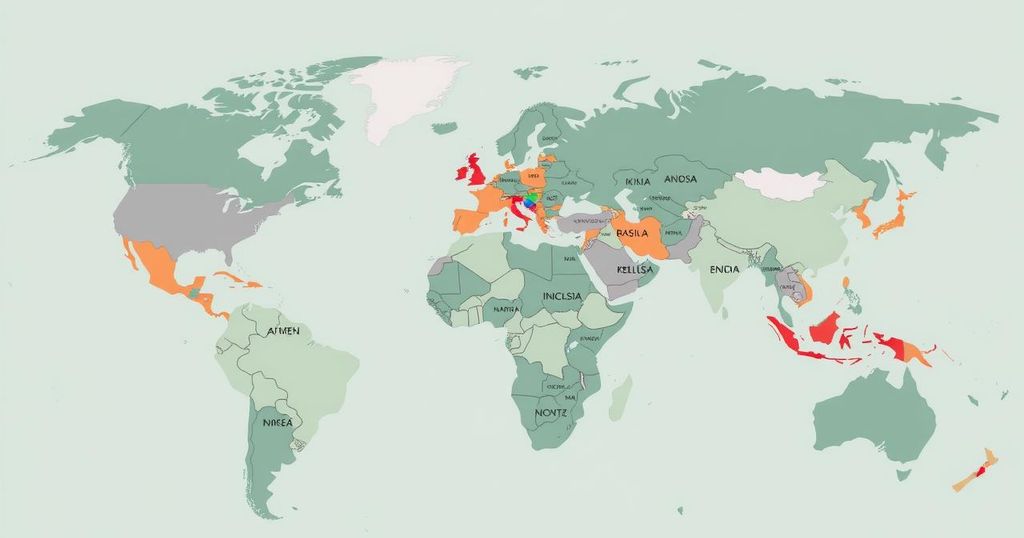Trump Administration Considers Expanded Travel Ban Targeting 43 Nations

The Trump administration is drafting a broader travel ban affecting up to 43 countries. A preliminary list includes an outright ban for citizens from 11 nations and restricted entry for 10 others. Modifications are expected as the proposal undergoes review by officials.
The Trump administration is contemplating a new travel ban that could potentially affect the citizens of up to 43 countries, surpassing previous restrictions set during his first term. This proposal, which has emerged from internal discussions, categorizes countries into three tiers based on the perceived risks they pose to the United States.
A draft list, prepared by diplomatic and security officials, indicates that the “red” list comprises 11 nations: Afghanistan, Bhutan, Cuba, Iran, Libya, North Korea, Somalia, Sudan, Syria, Venezuela, and Yemen, whose citizens would face a total ban on entry into the U.S.
This preliminary list was developed by the State Department and may undergo modifications before being finalized within the White House, as indicated by anonymous officials. Regional bureaus, embassy officials, and security experts are currently assessing the adequacy of information regarding these countries and determining if any revisions are necessary due to other geopolitical considerations.
Additionally, there is an “orange” list featuring 10 countries where travel restrictions would apply but not be fully prohibitive. In this case, affluent business travelers might still gain entry, while individuals on immigrant or tourist visas would be denied access.
In summary, the Trump administration is drafting a travel ban proposal that could impact 43 countries, including a “red” list prohibiting entry for citizens of 11 specific nations. Modifications to this list are anticipated as discussions continue among various government officials. The inclusion of an “orange” list suggests careful consideration regarding affluent travelers amidst heightened security concerns.
Original Source: www.nytimes.com








